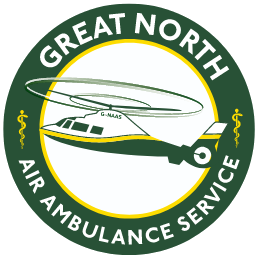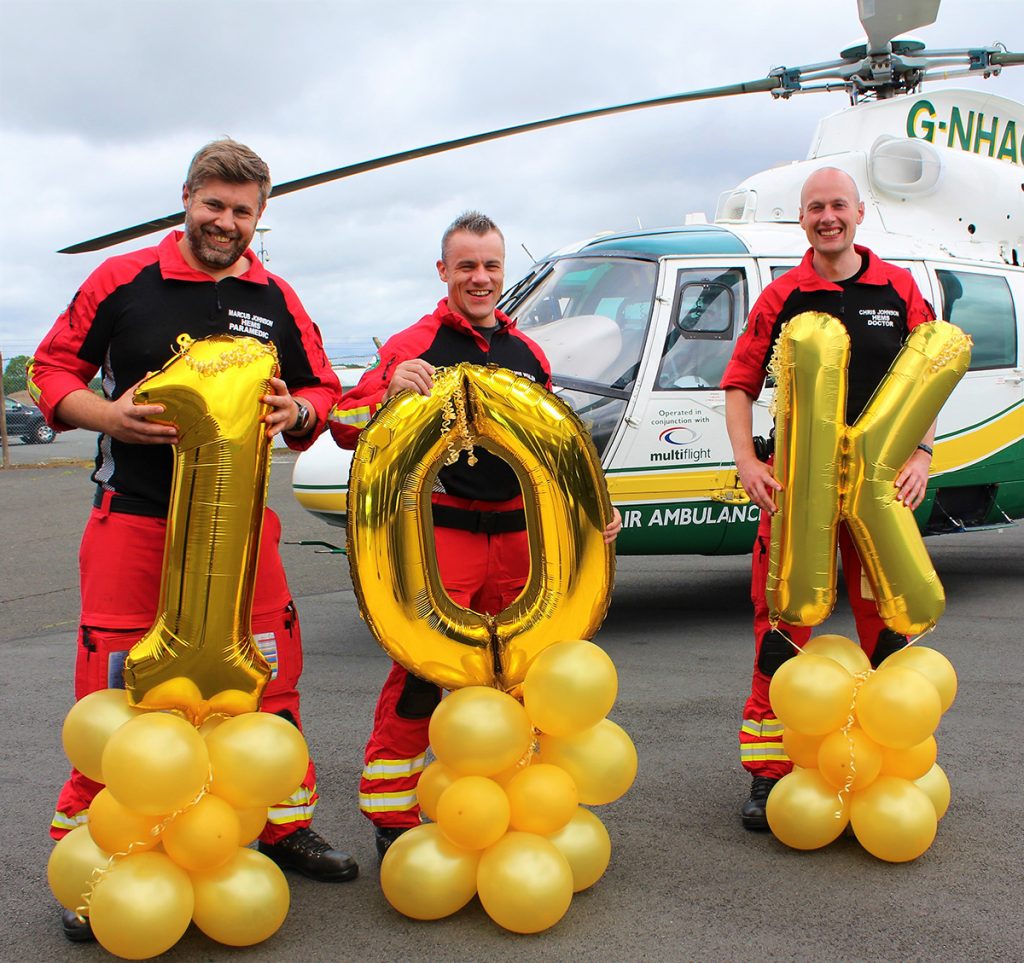Why do our helicopters take off backwards and who has priority in the sky?
These are just some of the questions our marketing intern Ella had for JJ, one of our pilots, and Stuart, who is head of quality and a critical care paramedic.
Read on for some interesting facts you may not know about our helicopters:
What are the differences between Pride of Cumbria II and Guardian of the North II?
JJ: So, the Guardian of the North II is a Dauphin N3+ while the Pride of Cumbria II is a Dauphin N3. The only difference is that the N3+ has a totally different autopilot to the N3.
We can give the Guardian of the North II full control with the autopilot whereas with the Pride of Cumbria II we can only give it partial control. This helps us a lot when we are flying in clouds and makes our life a lot easier.
What makes our aircraft different to others?
JJ: When the aircraft comes off a production line they are pretty much all the same. The only thing that makes it different is the fitting afterwards. It’s like a car with optional extras. You can get all sorts of fits like a corporate fit with comfy seats and champagne, whereas we’ve had to get a bit more practical with a Helicopter Emergency Medical Service (HEMS) fit.
The rear cabin of our N3 and N3+ aircraft have been reconfigured to give our doctors and paramedics more space in the back of the helicopter. This allows our team to have 360-degree access to their patients.
How does priority in the sky work?
JJ: In the UK, air ambulance helicopters use the call sign Helimed followed by a number which uniquely identifies the aircraft – we have Helimed 63 in the North East and Helimed 58 in Cumbria.
We then use an Alpha call sign when we’re enroute to an incident or on our way to a hospital, so Air Traffic Control will give us priority over other aircraft within a certain limit. An Echo call sign would be used once we’ve dropped our patient off, as we do not require priority, but we are still deployable.
In addition to this we use a Zulu call sign when we’re out training.
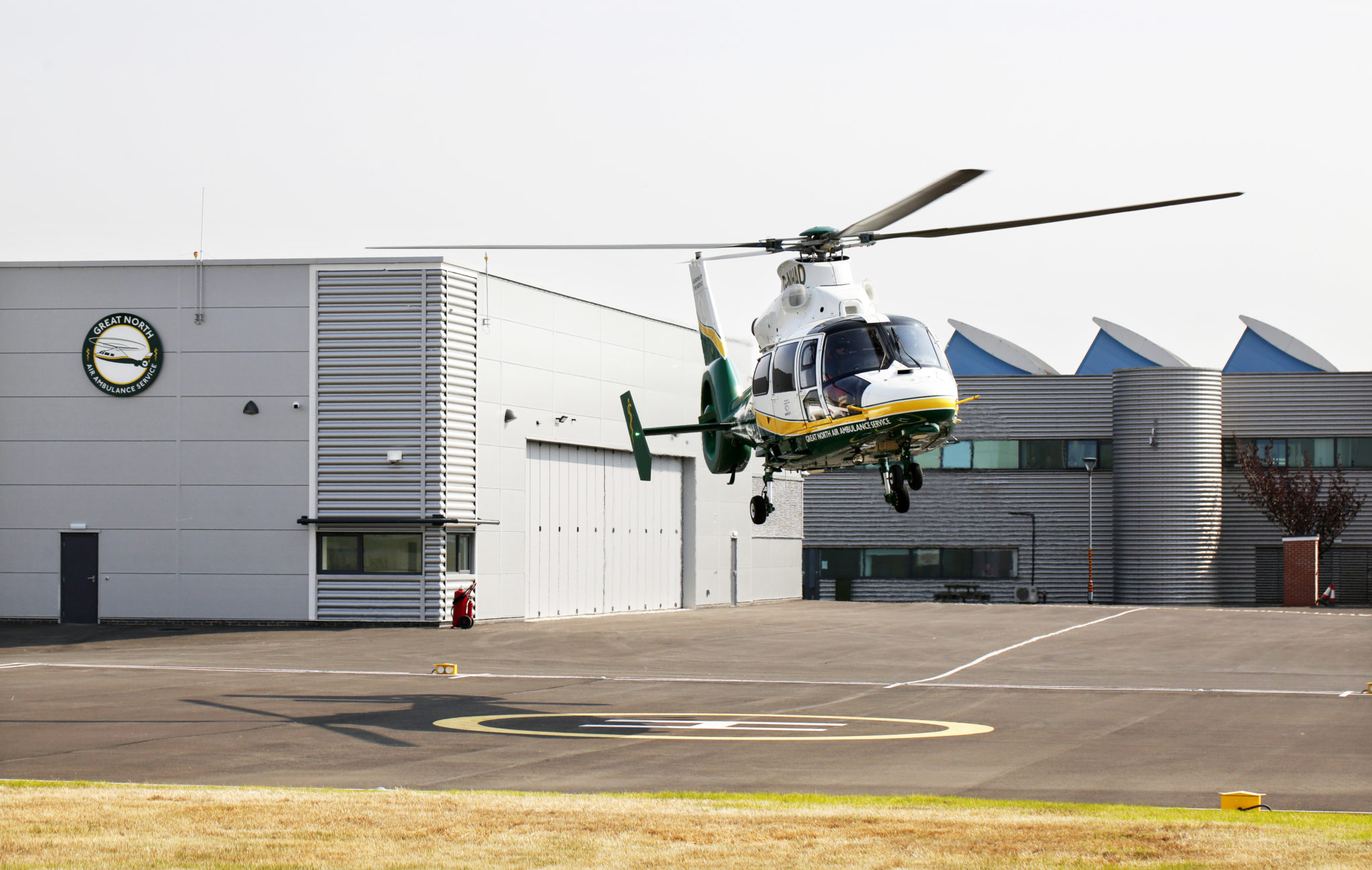

Stu: When there’s aircraft landing at an airport they would take priority because once they are set to land they can’t really do a lot. We tend to avoid flying over airports and things like that, anyway. If we do, we speak to the airport in advance of getting there so they can work out where all the air traffic is.
General aircraft will just keep out of our way, but Air Traffic Control help us to avoid them.
The only thing that would potentially have more priority over us is a hot air balloon, because they can’t get out of our way, so we would move away from them as they can’t control the hot air balloon as well as we can control the helicopter.
In situations involving military aircraft or sky shows, we would tend to avoid that because of the amount of air traffic in the area. In a sky show, they will have their own Air Traffic Control managing the air traffic so if absolutely necessary we could speak to them and they would move out of the way.
JJ: Military aircraft operate a lot more than us, they usually tend to be down at about 250ft. I’ve never had any interferences with military aircraft at all, we do have a low-level common frequency that we’ve got on our radios so we can listen out for military aircraft on there. We’re not so bad over here, Cumbria tend to have more contact with military aircraft, especially in the Lake district.
If they’re on the air traffic frequency, Air Traffic Control will tell them what we’re doing but a lot of times they’ll be on their own frequencies because when you’re outside controlled airspace you
Why don’t we fly at night?
JJ: While we don’t fly at night, we can land on scene during the day and then take-off at night. This is because we have seen where everything is and made sure everything is okay prior to landing, so we should be clear to take-off again once it gets dark.
As long as we go to a lit airport, helipad or hospital, we are safe there because of the lights helping us.
In comparison, flying and landing in the dark is pretty dangerous because you lose a lot of visual cues and can’t see obstructions or power cables.
Stu: On a night-time our team transfers onto a rapid response car, so that they are providing the same amount of care with the same kit on the road. They can usually get there quicker than a helicopter would be able to during the night as it would be a bigger struggle to find somewhere to park the helicopter near the emergency.
The only other thing that stops us during the day when flying is really poor weather like thick fog or clouds, where we can’t see the ground, or if something is wrong with the helicopters.
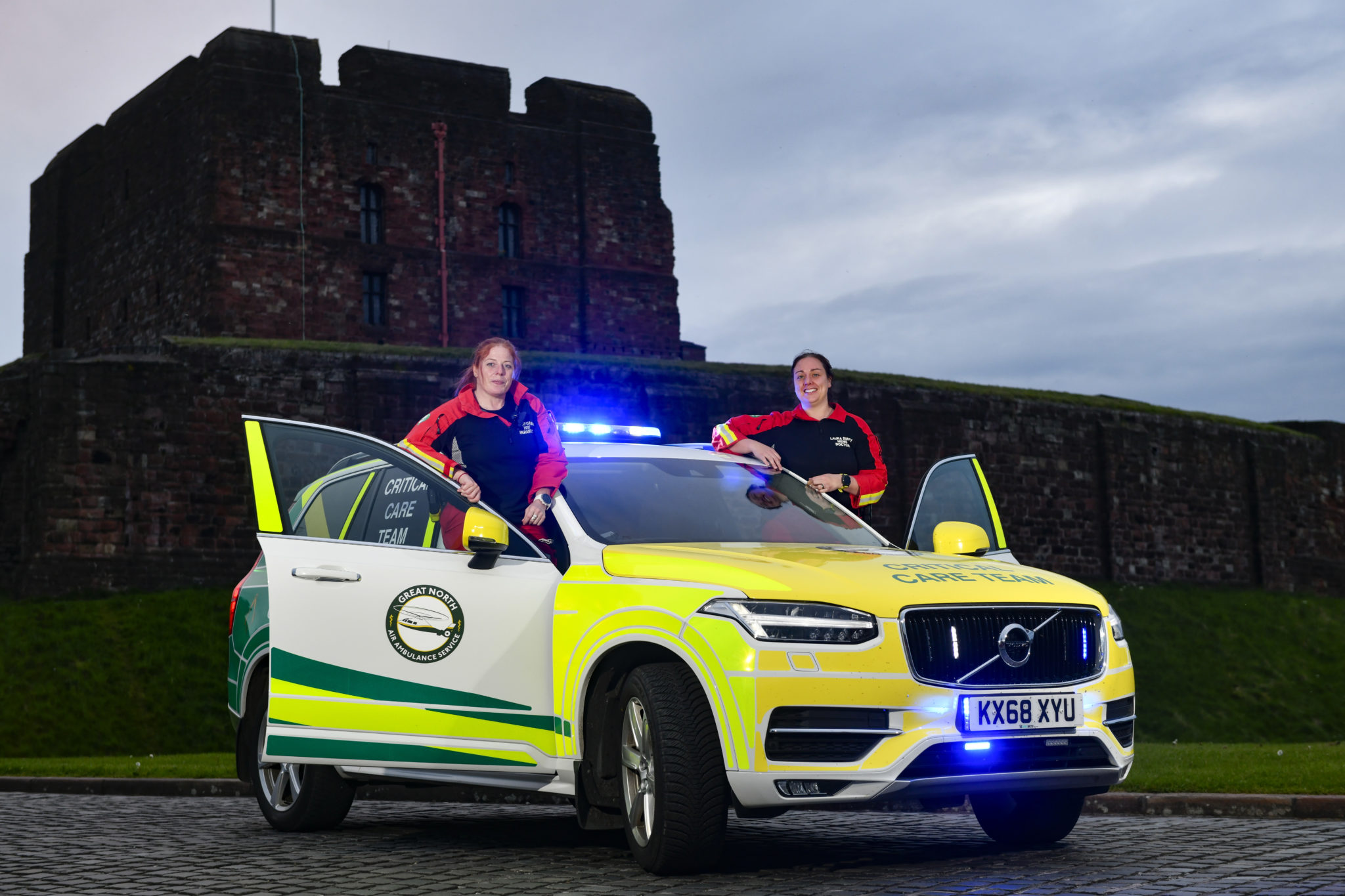

Why do we take off backwards?
Stu: Our aircraft has got two engines in case one fails and to give a better performance. When you take off in a helicopter you need to know that you can land if anything goes wrong, therefore instead of taking off forwards where you haven’t got much room in front of you, we take off backwards so that if something goes wrong we can just land back in the same place where we took off from.
JJ: We know that the area we took-off from is safe for us to land in, so we take off backwards to a point which we call the take-off decision point. Once we move forward from there, that means if we have an engine failure, the aircraft will be flying on one engine. Before that point, if we have an engine failure, we will just land back where we took off from.
How fast can our aircraft get to the scene of an incident?
Stu: The aircraft are really quick. We could be flying at 160-180mph. Obviously you have to get up in the air first before flying, but if the wind is behind you, you’ll go even faster than that.
The advantage of having a helicopter is that we can get our team to the patient quickly and then into hospital quickly as well.
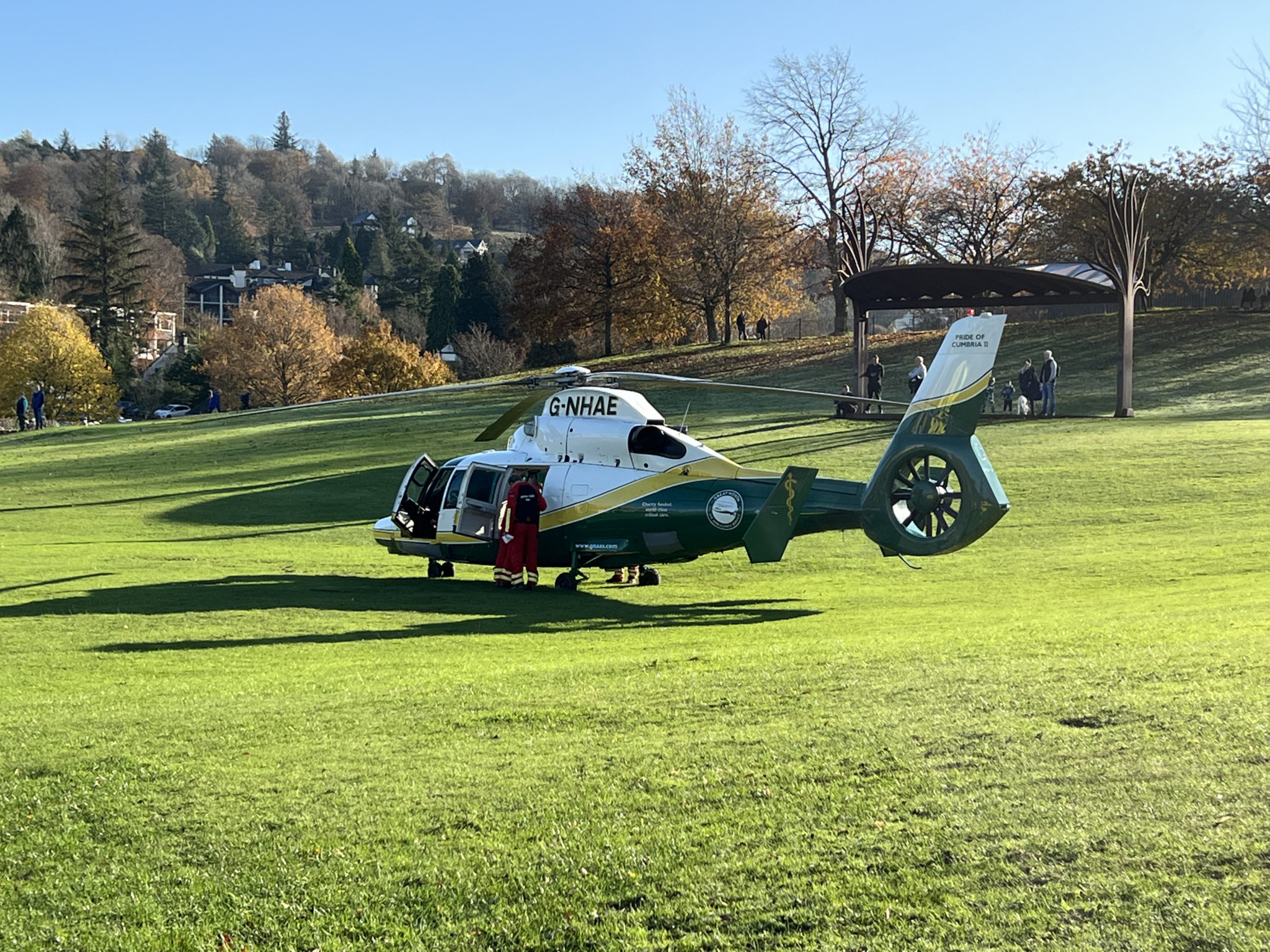

Is there anything else you think people might not know?
Stu: Helicopters are really expensive and the parts on them are expensive. However, they have a really good maintenance programme where each part of the aircraft has a number of hours that it’s allowed before it gets changed. Every now and then they go through a major service where the whole helicopter gets taken apart and put back together again to keep every bit of the aircraft working.
JJ: I don’t think people fully understand the dangers of approaching a helicopter with rotor blades or engines still running. Helicopters generate a lot of wind and noise, so when the public see us landing they tend to rush towards the aircraft, but they’re not really aware of the dangers associated with that from the blades, the engine exhaust and the tail-rotor. We can’t see backwards, so if anybody comes up from the rear and sticks their hand in the air there’s a chance they’ll lose a hand. We also pick up a lot of debris when landing which could go into people’s eyes so that’s also something to be aware of.
